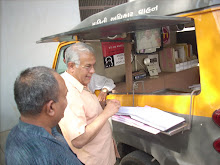Moneylife: Yogesh Sapkale: Mumbai: Saturday, August 09, 2025.
Bank of Maharashtra (BoM) has technically written o a staggering Rs11,313.34 crore in loans from accounts with outstanding dues of Rs100 crore and above between nancial years (FY)16–17 and FY24–25. Despite these massive write-os, the Bank has managed to recover only Rs2,652.70 crore as of 31 March 2025—just about 23% of the technically written-o amount.
Here is another shocker: BoM, the public sector bank (PSB), admitted that it took a substantial haircut of around 67%—amounting to Rs2,462.82 crore—while settling 27 loan accounts worth Rs3,690.01 crore through the national company law tribunal (NCLT) over the past six years. And just like the State Bank of India (SBI), BoM has refused to disclose the names of its big defaulters.
A Right to Information (RTI) reply received by Pune-based activist Vivek Velankar oers a rare glimpse into how PSBs continue to absorb large losses from big-ticket defaulters, often without full recovery, under the guise of technical write-os and insolvency resolution processes. The Bank has declined to reveal borrower names, citing privacy provisions under Section 8(1)(j) of the RTI Act, 2005.
The highest technical write-o was in FY19–20 at Rs3,539.67 crore, followed by Rs3,002.85 crore in FY20–21 and Rs2,096.52 crore in FY18–19. Over the years, the pace of such write-os seems to have reduced, with Rs798.68 crore written o in FY21–22, Rs107.18 crore in FY22–23, and Rs277.17 crore in FY23–24. The Bank reported no technical write-os in FY24–25 so far.
Despite wiping o such large sums from its books, recoveries have been modest. Bank of Maharashtra told Mr Velankar that Rs2,652.70 crore has been recovered from these technically written-o accounts as of 31 March 2025, reecting a recovery rate of just around 23.4%. In a disclosure, Bank of Maharashtra furnished data to Mr Velankar, the president of Pune-based Sajag Nagrik Manch, on how much haircut—essentially the loss accepted by a lender on a non-performing loan—it has taken while settling cases through the NCLT over the last six years.
From FY19–20 to FY24–25, the Bank settled 27 cases involving a total outstanding balance of Rs3,689.01 crore. However, only Rs1,227.99 crore was recovered through approved resolution plans, amounting to a cumulative haircut of Rs2,461.02 crore or an overall loss of about 66.7%. Since he could not procure this information under RTI, he used his rights as a shareholder and asked for it as a question for the annual general meeting (AGM) of BoM on the haircut taken by the lender since FY19-20. A year-wise breakdown of haircuts taken under NCLT resolutions shows the following:
These gures underscore the steep losses that the Bank has had to accept under the Insolvency and Bankruptcy Code (IBC) resolution framework. In most years, haircuts exceeded 65%, with FY20–21 seeing a staggering 92.27% haircut on just two cases.
Despite the severe erosion in value, Bank of Maharashtra refused to divulge names of borrowers whose loans were either technically written o or settled through NCLT, reiterating that the details are 'personal in nature' and fall under the exemptions of the RTI Act. In another query, Mr Velankar sought details on how much recovery was made annually from loans that had been technically written.
While names and account-level data were withheld, the Bank conrmed that Rs2,652.70 crore had been recovered cumulatively by 31 March 2025 from such accounts. The Bank also declined to provide lists of borrowers whose loans were settled via haircut through NCLT or similar forums between FY17– 18 and FY24–25. These disclosures bring into sharp focus the magnitude of non-performing assets in India's public banking system and the limited success of recovery frameworks. As per the guidelines issued by the Reserve Bank of India (RBI) and the policy approved by banks' boards, NPAs, including those in respect of which full provisioning has been made on completion of four years, are removed from the balance sheet of the bank concerned by way of a write-o.
However, while technical write-os help banks clean up their balance sheets on paper, they do not reect actual recovery of public funds. The consistent trend of heavy haircuts in NCLT resolutions further aggravates the concern that large corporate defaulters often get away with repaying only a fraction of their dues. Bank of Maharashtra’s data is just one snapshot, but it reects a broader systemic pattern across the banking sector, where eorts to address bad loans—either through write-os or bankruptcy proceedings—continue to deliver suboptimal recoveries. For depositors, taxpayers, and policymakers, these gures reignite long-standing questions around credit discipline, borrower accountability and the ecacy of India’s legal and nancial recovery architecture.















































































